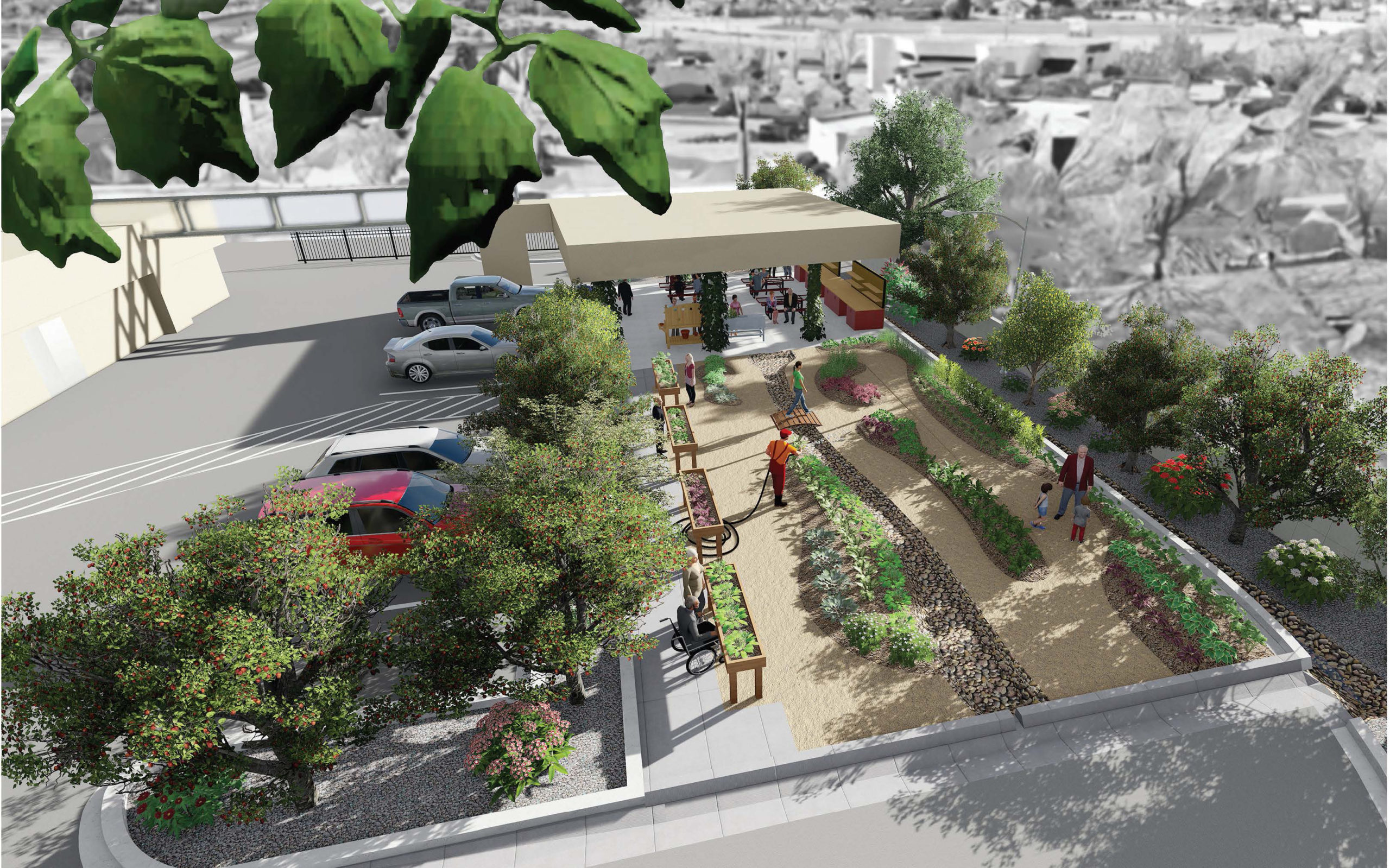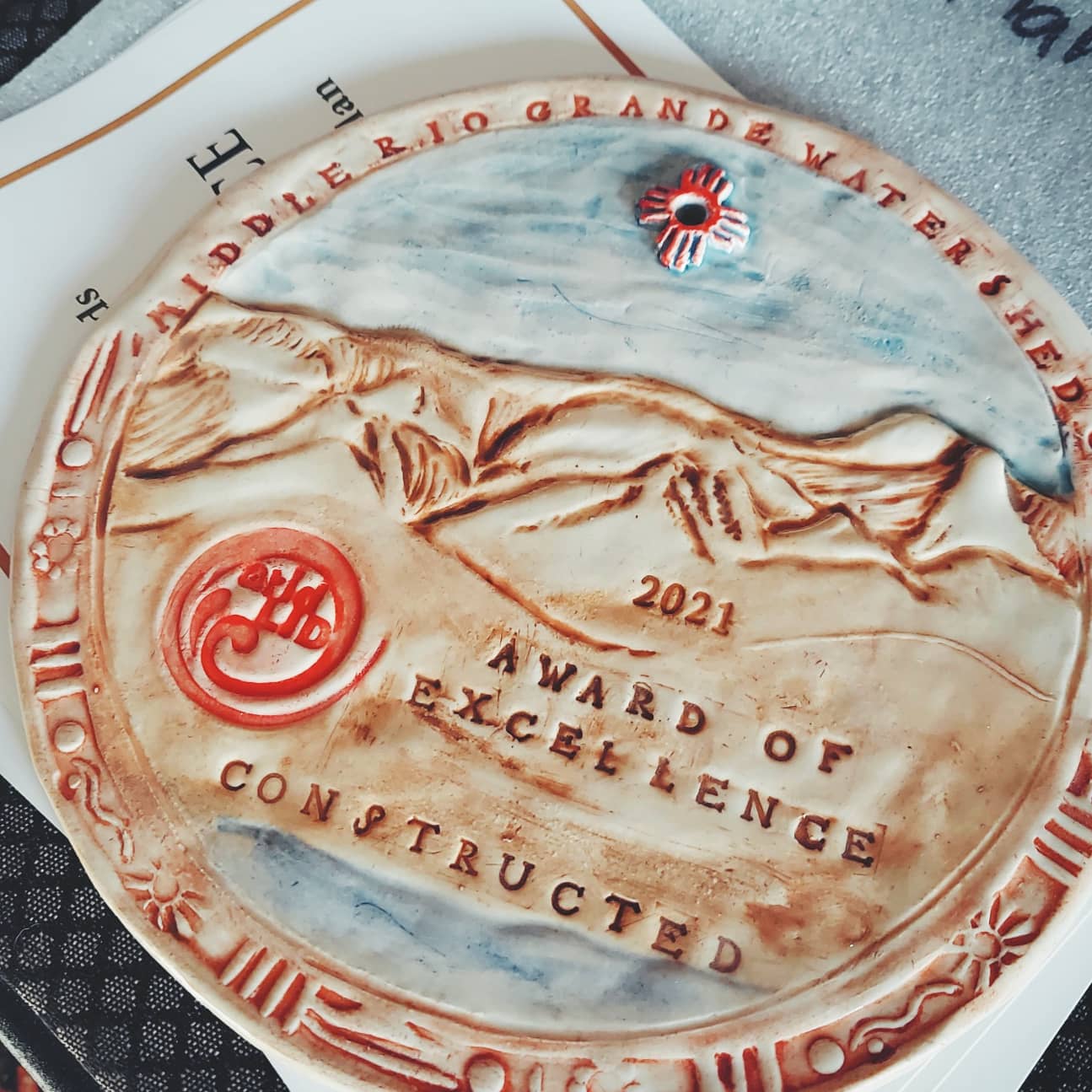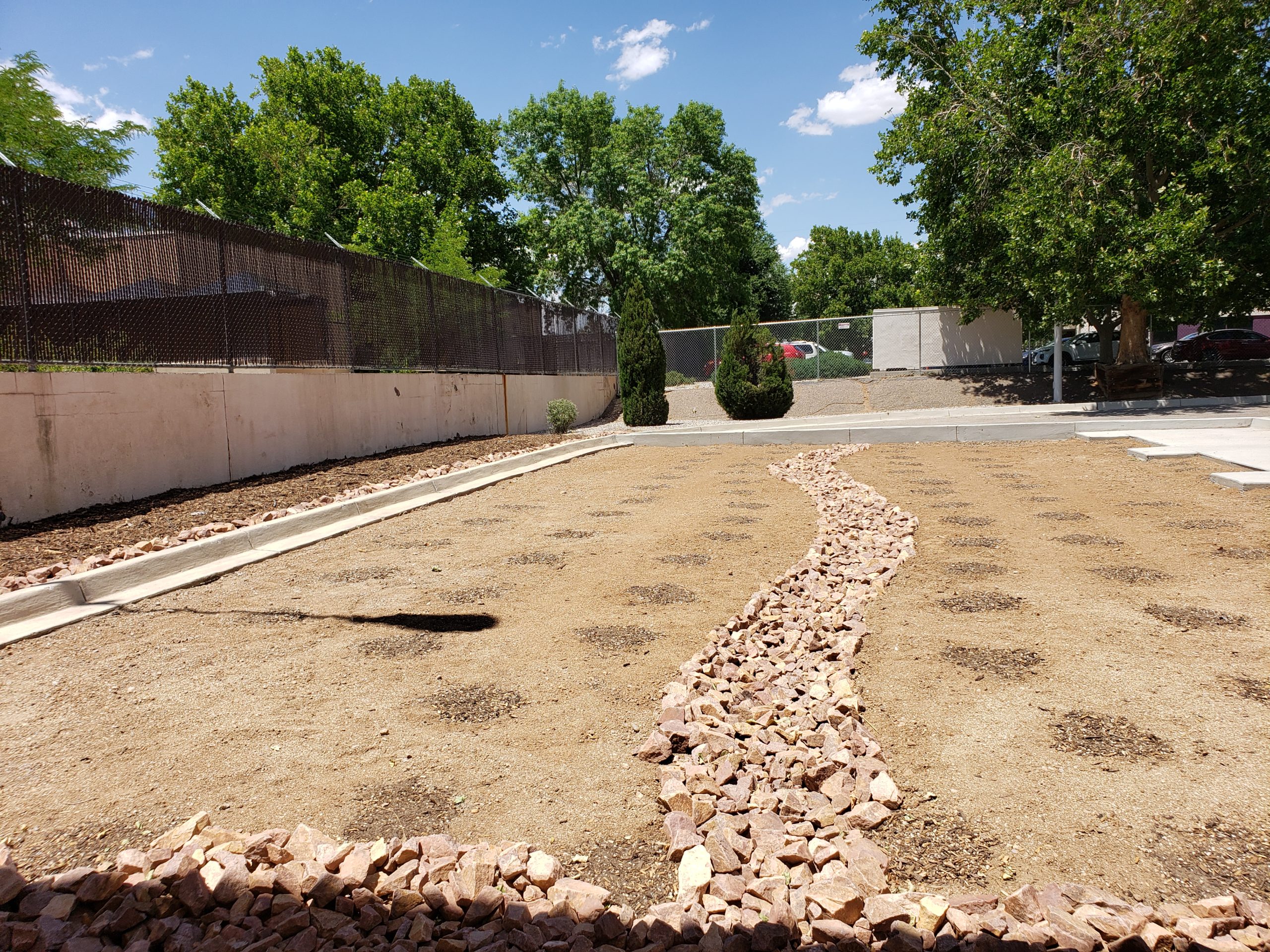Award of Excellence for Green Stormwater Infrastructure
Groundwork Studio was awarded Arid LID Coalition’s Green Stormwater Infrastructure’s top award for their work on the International District Urban Agriculture Plan’s Presbyterian Kaseman Health Resource Center (HRC) Community Garden. The Green Stormwater Infrastructure (GSI) Awards program promotes GSI projects and celebrates the outstanding teams exploring creative ways of meeting stormwater needs while caring for our Middle Rio Grande watershed.
The HRC Community Garden project is one of nine sites developed as part of the International District Urban Agriculture Plan. In partnership with Bernalillo County and the International District Healthy Communities Coalition (IDHCC), Groundwork Studio engaged a planning-in-action process involving more than 20 public and private stakeholder groups focusing on nine urban agriculture sites. The process included district-wide participatory design, assistance in acquiring funding and implementing several of the design plans. This immersive approach revealed key barriers and opportunities for sustainable community-based urban agriculture and produced realistic, actionable recommendations.
The Presbyterian HRC Community Garden project presented an incredible opportunity to both improve the quality and sustainability of their garden design while demonstrating soil remediation, water harvesting, and key urban garden design elements.



Supporting Urban Gardeners: Education and Partnership
The cost of water is a top barrier for urban gardeners, with broken irrigation systems not far behind. Integrating passive water harvesting is critical for garden sustainability. Passive water harvesting also improves water quality, de-compacts and remediates soil, mitigates heat mitigation and provides demonstration/educational opportunities.
Providing accessible examples is incredibly important for helping people buy-in to a different process and to allow other community members to replicate what they are seeing at home or in their project. When a new idea is proposed, it is important to demonstrate how the feature has worked well in the past.
The greatest challenge was addressing dependence on single-source funds and/or single individuals associated with the challenge of urban agricultural efforts. Our work built a network of partnerships, recommended client support, and implemented examples of low-impact design (such as green infrastructure). For HRC Community Garden, we addressed the perception that removing pavement and capturing parking lot runoff would create additional drainage problems by reducing the amount of discharge to the street.
Maintenance requirements for the different project sites vary, but in general, machinery is not required – skilled labor is, instead. A unique characteristic of this plan and the planning process is that the partnerships built are a central part of each of the nine projects’ long-term success. Bringing different project stakeholders together allowed for an exchange of resources – where one party needed something, another was able to provide it. For example, the project paired middle school Food Justice Interns with another priority traditional Community Garden to provide much-needed maintenance assistance.



Long Term Vision
Several of the priority sites designed as part of the Urban Agriculture Plan were implemented. This included constructing a water harvesting system, soil sponges, and garden boxes at the HRC Community Garden, installing water harvesting tanks and Food Justice Intern maintenance at the traditional Le Jardin Verde Community Garden, and improvements to Ilsa and Rey Garduno Agroecology Center and East Central Ministries Therapy Garden.
To ensure a seamless transition to ongoing plan implementation (and in response to a plan recommendation) Bernalillo County created an Urban Coordinator position to facilitate ongoing project partner meetings with the project website as the primary networking tool and community resource for urban agriculture. Project partners continue to work together on overlapping projects (assisting each other with garden improvements and maintenance) and in joint grant applications, replacing what can often be a competitive environment with one of collaboration.
Video: Amy Bell, Groundwork Studio Principal describing the HRC Community Garden Project

